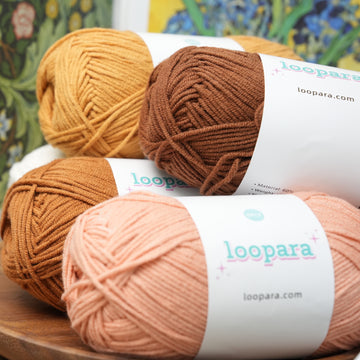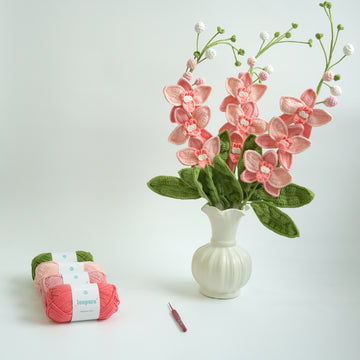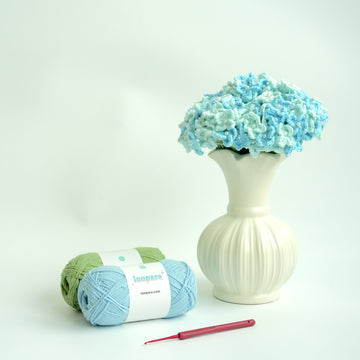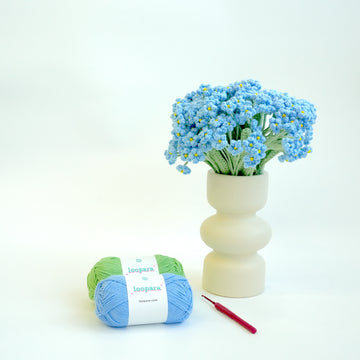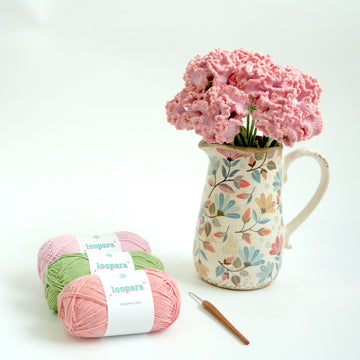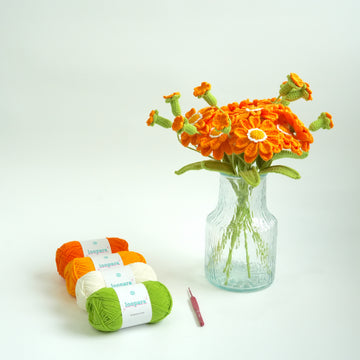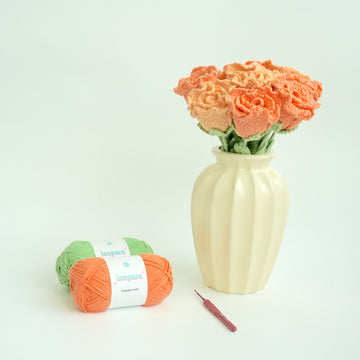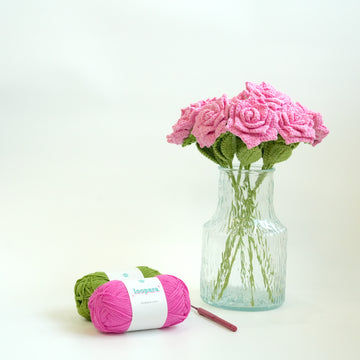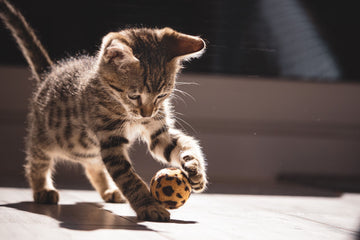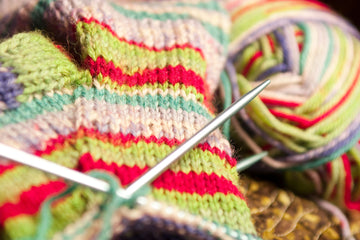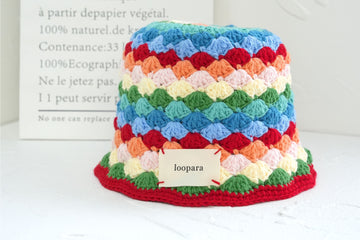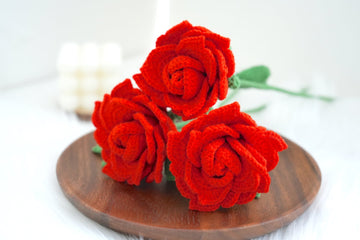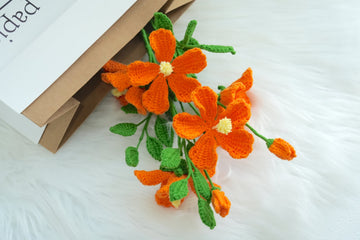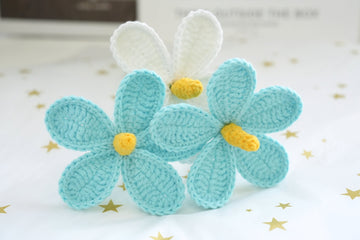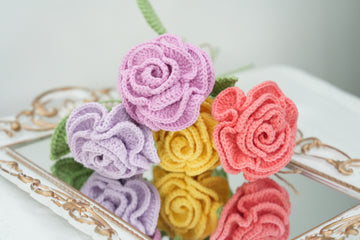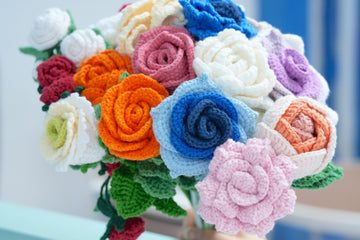When you’re crocheting clothing, you want something that looks as good as it is comfortable. So what’s the best yarn for crochet sweaters?
We’re going to explore the factors to take into consideration when you choose your yarn. And we’ll set out some yarns we think deserve to make your shortlist.
What makes a good yarn for crochet sweaters?

Every project is different, but what all sweaters have in common is that you want someone to wear them! That means the yarn you use needs to have certain properties.
So before you make your choice, consider:
- How you want your sweater to look. Lightweight or chunky? Boxy or drapey? Plain or patterned? Monochrome or multicolored?
- Where and when it will be worn. Does it need to keep out the chill on a cold winter’s day? Or will it provide an extra layer on a summer’s evening? Does it need to be breathable? Or will it be worn over another garment?
- Who’s going to wear it. Does the person concerned have allergies or sensitive skin?
- Who’s going to wash it. Are they happy to handwash a delicate yarn? Or are they more likely to chuck a pile of unsorted laundry in the washing machine?!
- How you’re going to make it. Are you happy to spend a long time working up delicate thread? Or do you want faster results?
Let’s look at how these different factors will affect your choice of yarn.
Lightweight or chunky?
How chunky your sweater is will depend primarily on the weight of the yarn you use. “Weight” here doesn’t mean “mass” – it measures the thickness of the yarn.
Yarns are divided into seven weight categories, depending on something called “wraps per inch” or WPI. That means the number of times a piece of yarn can be wrapped around a rule over a 1-inch distance.
Standard categories range from 0 to 7, with 0 being the lightest – i.e. the thinnest – yarn, and 7 being the thickest.
If you’re following a pattern, choose whatever weight yarn it specifies. If you’re not, here are some guidelines to help you decide:
- Yarn graded 1 (also known as super-fine or fingering) will give you a delicate sweater that drapes well. You’ll also get great stitch definition.
- Yarn graded 4 (also known as worsted weight) will give you a medium-weight sweater. It will still show good stitch definition, but you’ll be able to work it up quicker than a lighter yarn.
- Yarn graded 5 to 7 (also known as bulky, super-bulky or jumbo) is great for chunky knits for cold winter days. But it won’t drape as well as lighter weight knits. And it can make the wearer look bulky if it’s worn with other layers.
Your choice of fiber will affect the drape of your sweater too. Bamboo drapes well. Linen is generally stiffer, but the drape improves with washing. And synthetic fibers usually, but not always, have less drape and a boxier look.
Warmth
If you’re working with the same fiber and pattern, the thicker the yarn, the warmer it will be. But different fibers have very different insulating properties.
Top of the shop when it comes to a warm sweater is wool. That’s because wool has an open structure that traps a layer of warm air.
Acrylic is a synthetic fiber made from petroleum, and it’s designed to mimic the texture and appearance of wool. But it isn’t as warm, so can work well as a fabric for spring or fall temperatures.
Cotton or linen yarns are both good choices for cooler, lighter-weight sweaters.
Breathability
Breathable yarns allow the air to pass through, so they’re comfortable to wear and won’t leave you working up a sweat. Natural fibers are generally breathable, whilst synthetic ones aren’t.
Wool, cotton, linen and bamboo are all good choices if you want a sweater that can breathe.
But while cotton, for example, will wick away moisture from the skin, wool won’t. That means a cotton sweater will help you stay cool, but a wool one won’t absorb sweat.
Does it need to be hypoallergenic?
If the person you’re making the sweater for has allergies or sensitive skin, it will be important to choose a yarn that doesn’t trigger problems.
About 1 in 200 people have an allergy to lanolin, the oil in wool. And some people with sensitive skin find they’re more sensitive to animal-based fibers generally.
Dyes and processing methods can also cause reactions in some people.
It’s worth noting that some yarns labeled “hypoallergenic” are so-called because they have a coating over the yarn. The coating is designed to prevent dust mites and other allergens settling on the fabric. It can, though, wear off with time and washing.
If you’re worried about allergies, it’s best to look for a yarn that’s been certified by an independent agency.
Look for natural yarns accredited by GOTS (the Global Organic Textile Standard). Both natural and synthetic yarns can also be accredited by OEKO-TEX, guaranteeing they’ve passed tests for the presence of over 1,000 toxins.
Washability
If you, or whoever will be washing the sweater, doesn’t mind handwashing, you’ll have plenty of yarns to choose from. But if not, look for something that can cope with the washing machine.
The received wisdom is that synthetic fibers are easier to wash. And it’s certainly not a good idea to machine-wash a jumper made from pure lambswool.
But that’s not quite the whole story.
While acrylic will certainly cope with being bunged in the washing machine better than lambswool, it’s not immune to laundry-related issues.
It can lose its shape, and the fabric can degrade. And with hotter washes, it’s prone to pilling (or “bobbling” as it’s sometimes known).
Cotton or linen wash well, as long as they’re not on too hot a cycle. At high temperatures, they can shrink, and colors may run.
And some kinds of wool will cope with the washing machine. Some 100 per cent merino yarns, for example, will handle a delicate wash at 30-degrees. Just don’t put it in the dryer, or you’ll end up with a felted garment half the size of the one you started with.
Ease of use
To some extent, “ease of use” is a subjective term. A yarn that suits one crocheter won’t necessarily suit another. Nevertheless, there are some factors that will make a difference to your crocheting experience.
A yarn that’s rigid or coarse will be harder on your hands than one that’s softer and smoother. But a yarn that’s very smooth may cause frustration by repeatedly sliding off your crochet hook.
A thicker yarn will take less time to work up into a sweater than a thinner one. But if it’s very chunky, it can be awkward to manipulate.

Best yarns for crochet sweaters
With all those factors in mind, here are a few yarns we think it’s worth considering when making a sweater.
1. Wool
Wool is a classic choice for sweaters. It’s warm, light and breathable, and drapes well. It’s also moisture-resistant, so it won’t absorb sweat.
But it does require more delicate handling on laundry day. Some wools need to be washed by hand. Others will tolerate the washing machine on a gentle cycle.
However they’re washed, they’ll also need to be dried with care. The tumble dryer is off-limits if you don’t want your sweater to shrink to a fraction of its size. And it’s generally better to dry wool garments flat, so that they don’t stretch.
Wool blends, like wool and acrylic, can be used to create a more washable garment that’s still warm. And they’re cheaper than pure wool too.
2. Cotton

For a lightweight summer sweater, cotton yarn is a great option. It works particularly well with open, lacy patterns, perfect for warmer weather. And it wicks away moisture from the skin, keeping you cool when the temperature rises.
Some cotton can be a little rougher to the touch. Mercerised cotton is treated so that it’s softer and drapes better. And it will absorb and hold dyes better too. It’s more expensive than non-mercerised cotton though.
Cotton washes well, as long as it’s not at too high a temperature. And with reasonable care, it will stay looking good for years.
3. Linen
Linen is similar to cotton in many respects. It has the same breathable and moisture-wicking properties that make it a great choice for summer sweaters. And while it can start off harder, it will soften up with every wash.
The main advantage of linen over cotton is its environmental credentials. It doesn’t take as much water to produce. But it can still be produced using large amounts of pesticides. Look for organic options to be kinder to the planet.
4. Acrylic
Natural fibers are great, but they can be expensive. Acrylic is a good option if you’re watching your budget.
It’s a versatile yarn, available in a host of weights and colors. While it’s not quite as warm as wool, a thick yarn will still keep you snug. And you won’t have to worry about it felting on a warmer wash.
Acrylic is made from fossil fuels and leaches microplastics into the water system when it’s washed. Look for yarns made from recycled plastics to reduce the environmental impact.
Summing up: the best yarn for crochet sweaters
The best yarn for your crochet sweater will depend on the kind of sweater you’re making.
Cotton and linen yarns are great for lighter weight garments. And super-fine yarns will give great results with intricate patterns.
Wool is king when it comes to warmth. But acrylic can be toasty too, is cheaper, and doesn’t need handwashing.
Choose chunky or jumbo yarns for a thicker sweater that’s quick to make into the bargain.


